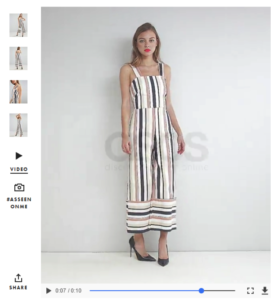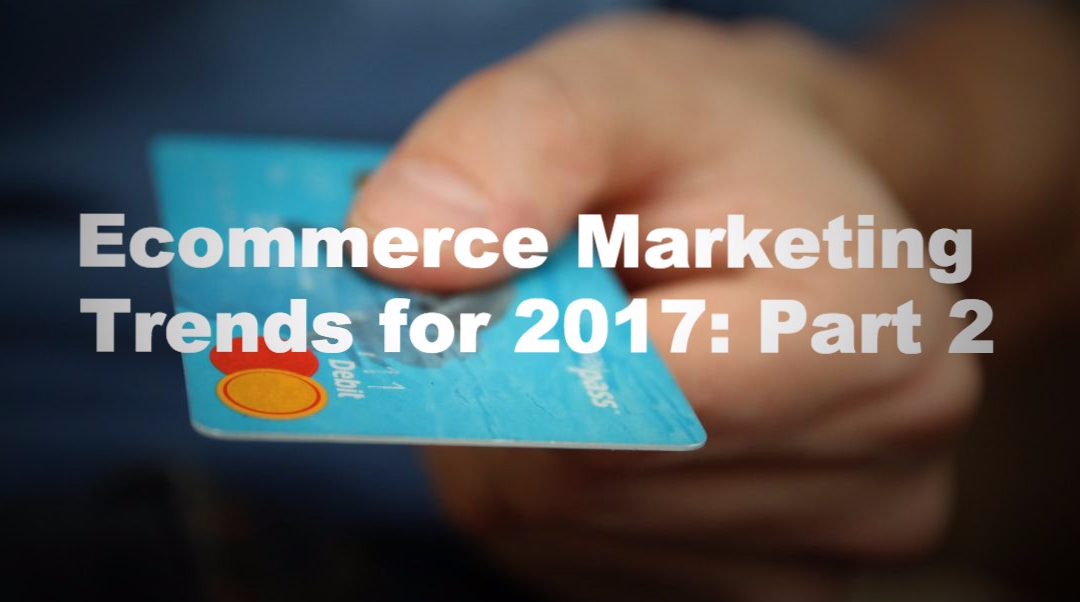Another valuable contribution from Patrick Foster, an ecommerce consultant and writer at ecommercetips.org. If you missed the first part of this post, you can read that here.
In our last blog, we looked at how ecommerce marketing is in constant flux. It’s important as marketers to stay true to core brand values, but also explore new avenues where we can. These next three ecommerce marketing trends are all about using social media and video to create a sense of connection with customers. Read on to find out how you can move on from simple personalization.
Ecommerce marketing in 2017 is not just personalized, it’s personal; competition is hot, and creating an emotional connection is critical to success. We’re going to look at the most people-centric marketing techniques of 2017 and introduce some new concepts that might challenge your idea of what ecommerce marketing is capable of.
User generated content
US clothing brand ‘Free People’ let their customers do they talking with product reviews and photo uploads of themselves wearing garments. This simple, user generated site content is helpful for other customers, it builds a sense of community and it aids in attracting loyal customers.
 Image Credit: Free People
Image Credit: Free People
User generated content comes in many forms, but the premise is that it creates a personal connection between brand and consumer, and so long as the content is positive, it provides a peer to peer recommendation/approval platform that money just can’t buy. The personal picture uploads can also be tagged on other platforms like Instagram and Pinterest creating multi-channel content that’s more likely to reach people via the platforms they prefer.
The personal power of video
Where Free People have used the photo craze to engage their customers, other ecommerce brands use video very effectively. Take ASOS as a point in case. Online shoppers can see a desired garment modeled in front of them by using the catwalk feature. This is a great way to communicate more about your products and give your customers something that’s useful and may well lead them on the path to a purchase.
 Image Credit: ASOS
Image Credit: ASOS
But video can be used by brands in incredible ways – imagination is the only limit. Thought leadership content is often created using video as a medium; product unboxing and beauty reviews as well as a ton of user generated gaming content is all available at the touch of one or two small buttons and a screen. A mobile phone is often the only piece of equipment required to make engaging, quality video that’s easily shared. Social channels like Instagram, SnapChat and Facebook are owning this format and making it very personal indeed. In fact all social channels have become more video oriented in response to what audiences want.
If you’re ready to jump in a little deeper, why not seek out a local freelance videographer or content agency,or social strategist and talk about how video could be used to help increase sales. Video is fun, engaging, accessible and incredibly popular. It can often say everything you want to in seconds rather than minutes or even hours – and it’s great branding.
Chatbots
A chatbot is effectively a program that translates a user’s command or question and returns an answer. Lots of digital companies use chatbots to more efficiently help customers on their website. Those little bubbles you see pop up when you’re browsing a site, asking if you need help, or if you want to talk? They aren’t there so you can chat to a random stranger about your day, they’re a bot that is there to efficiently move you on to the next stage of your buying journey.
Of course, we also have voice activated chatbots like Siri, Cortana, Alexa and others. These bots are becoming more and more sophisticated, and as your connected devices collect more data about you, they’ll be even more effective at responding to your requests. AI is the next leap in the technology of our lives and it will have a massive impact on the way we shop. Chatbots are already being used effectively in marketing around the world and this Nordstrom mobile chat bot, reported on in December 2016 via GeekWire is a great example of how.
For now, get familiar with chatbots and how they may be able to help you more effectively meet the needs of your customers when they are browsing your ecommerce site.
Hopefully that’s given you some food for thought and you’ve enjoyed our ecommerce marketing series! I’d love to hear what kind of marketing technology and software you’re using to scale your ecommerce stores, and if you’ve used any of the methods mentioned in this post?
 Patrick Foster, ecommerce entrepreneur, coach & writer.
Patrick Foster, ecommerce entrepreneur, coach & writer.
I currently create and share ecommerce content for entrepreneurs and business owners. I’m especially interested in the emerging technology for online marketers.




